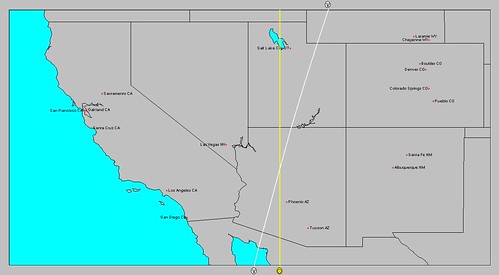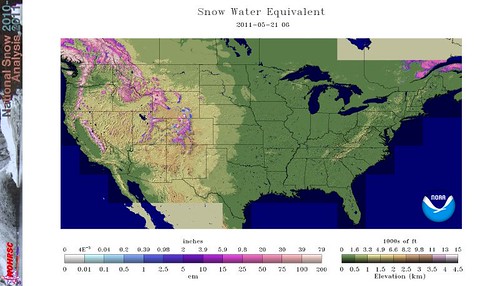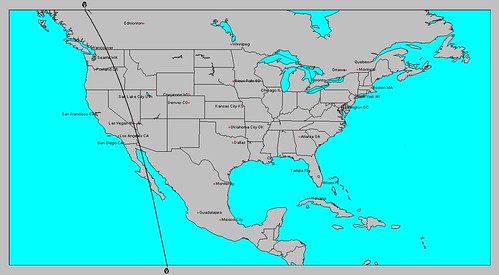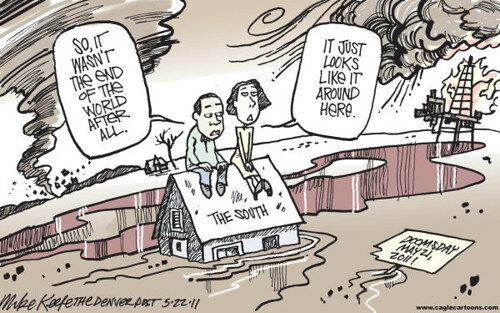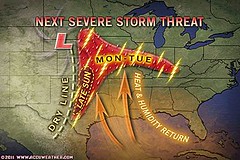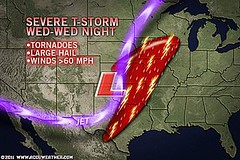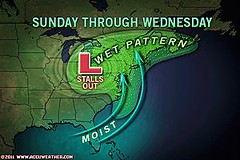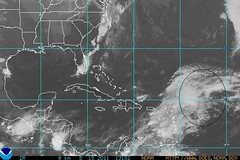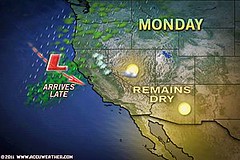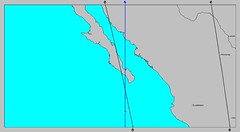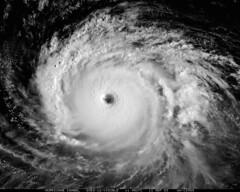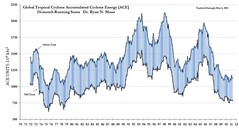The following long-range weather forecasts reveal some dates and places worth watching for tropical activity and other forms of severe weather. The slower moving planets can have a major impact on the weather as they align in important configurations. During June of this year, Uranus and Pluto will be only 2 degrees shy of an exact square. The square or 90 degree aspect between planets in astrometeorology brings low pressure systems and disruptive atmospheric conditions.
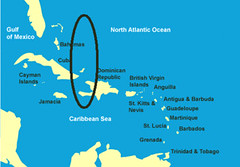
June 17-20
On the 18th and 19th of June, Mercury will trigger this square by squaring Uranus and then opposing Pluto. One of the areas vulnerable to their influence is just east of the Bahamas and southward through Haiti. This is an area that has the potential to develop a tropical system or some type of severe weather pattern. New England is another area, which most likely will experience a severe weather pattern of its own.
The Baja California also stands out as an area where tropical storm or severe weather conditions may develop. Since I'm already expecting a low pressure or tropical system around June 21-23, this may be a build up of that. The Rockies appear to be affected by a strong front or low pressure system at this time as well.

June 20-23
Mercury will square Saturn on the 21st and Mars will square Neptune on the 22nd. One area that stands out for possible tropical storm development is around 67 west longitude and 25 north latitude. This is roughly 550 miles east of the Bahamas and 430 miles north of Puerto Rico. This may be the same system mentioned in the above June 17-20 forecast or an independent one. The Rockies are also highlighted again for severe weather conditions in the form of a front or storm system. This could be a time when the melting snowpack brings flooding conditions to the area.

June 17-20
On the 18th and 19th of June, Mercury will trigger this square by squaring Uranus and then opposing Pluto. One of the areas vulnerable to their influence is just east of the Bahamas and southward through Haiti. This is an area that has the potential to develop a tropical system or some type of severe weather pattern. New England is another area, which most likely will experience a severe weather pattern of its own.
The Baja California also stands out as an area where tropical storm or severe weather conditions may develop. Since I'm already expecting a low pressure or tropical system around June 21-23, this may be a build up of that. The Rockies appear to be affected by a strong front or low pressure system at this time as well.

June 20-23
Mercury will square Saturn on the 21st and Mars will square Neptune on the 22nd. One area that stands out for possible tropical storm development is around 67 west longitude and 25 north latitude. This is roughly 550 miles east of the Bahamas and 430 miles north of Puerto Rico. This may be the same system mentioned in the above June 17-20 forecast or an independent one. The Rockies are also highlighted again for severe weather conditions in the form of a front or storm system. This could be a time when the melting snowpack brings flooding conditions to the area.
Neptune and Rockies Flood Potential
Hurricane Season 2011 Baja, Mexico
Hurricane Risk-Management
Hurricane Season 2011 Predictions
Overview of UK Winter 2012-13
The Winters of 2011-14
Cyclone Yasi fulfills long-range prediction!
Tropical Storm Matthew Fulfills Long-range Forecast!
Hurricane Earl and T.D. 10E Fulfill Long-range Forecasts!
Tropical Storm Alex Fulfills Long-range Prediction!
Bonnie Fulfills Long-range Forecast!
Introduction to the Weather Alternative
How Long-Range Forecasts Are Made
Excerpts from Tidal Dynamics by Fergus J. Wood

